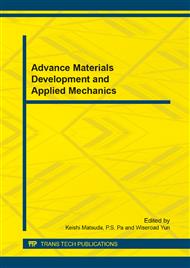p.435
p.439
p.444
p.450
p.454
p.458
p.464
p.468
p.472
Research about Deformations Identification for Globoidal Cam Machine Based on Multi-Body System Theory
Abstract:
Deformation error caused by cutting heart and external force is one of the key factors influencing machining precision in machining process. Aiming to identify the machine deformation which has the most important influence on machining precision, an identification method for sensitive error and deformation based on multi-body system theory has been proposed, which lay the basis of stiffness distribution of a machine tool and structure optimization of parts. At the end of this paper, the effective of this method is verified by using the machine tool for globoidal cam.
Info:
Periodical:
Pages:
454-457
Citation:
Online since:
July 2014
Authors:
Price:
Сopyright:
© 2014 Trans Tech Publications Ltd. All Rights Reserved
Share:
Citation:


